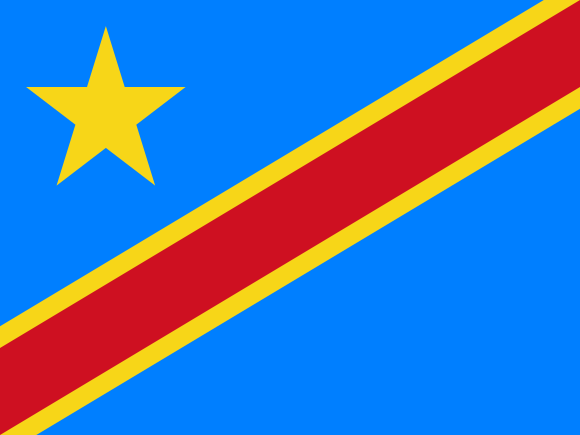At a glance
CDC works with partners in Democratic Republic of Congo (DRC) to build sustainable public health capacity, strengthen laboratory systems and surveillance networks, deliver high-quality HIV and TB diagnostic, treatment, and prevention services, and respond swiftly to disease outbreaks at their source, preventing health threats from reaching the U.S.

Strategic focus
Since 2002, the U.S. Centers for Disease Control and Prevention (CDC) has had a long-standing partnership with the DRC’s Ministry of Health (MOH). After the launch of the U.S. President’s Emergency Plan for AIDS Relief (PEPFAR) in 2003, this partnership rapidly expanded to align with the UNAIDS 95-95-95 targets by achieving 95 percent diagnosed among all people living with HIV (PLHIV), 95 percent on antiretroviral therapy (ART) among those diagnosed, and 95 percent virally suppressed among those on treatment.
CDC’s work focuses on supporting HIV prevention and treatment and integration of HIV and tuberculosis (TB) care and treatment. CDC’s strategic work also includes strengthening the public health system, health information systems, laboratory capacity, and health workforce development.
Read more about CDC's most recent key activities and accomplishments below.
Building public health capacity
- Provided technical expertise and financial assistance to the MOH for HIV service delivery. Through CDC support, the MOH provides comprehensive and integrated HIV services in the Haut-Katanga and Kinshasa provinces, as well as laboratory services for the Lualaba province.
- Supported an innovative HIV electronic reporting system through a data repository to increase capacity in the health management information systems.
Strengthening laboratory systems and networks
- Scaled-up laboratory infrastructure to meet the increasing needs for viral load testing and emerging infectious diseases, including diagnostic network optimization and quality management systems.
- Increased access and capacity for early infant diagnosis and viral load testing. CDC-supported laboratories processed 69,876 samples for viral load testing in FY2024, achieving an 83 percent coverage with support from PEPFAR.
- Implemented an in-country development program for laboratory accreditation.
HIV prevention and treatment
- Supported strengthening the scope and quality of ART services for adults and children. Over 88,587 PLHIV received treatment in FY2024 through CDC’s support. CDC also significantly contributed to the adoption of the test-and-start approach and updating the new national HIV management guidelines.
- Supported updating the HIV elimination of Mother-to-Child Transmission plan and the rollout of optimized Tenofovir-based regimen. Over 1,290 pregnant women received ART through CDC support in FY2024.
Tuberculosis prevention and treatment
- Developed a TB infection control national plan to promote TB preventive treatment and support TB case identification.
- Provided TB preventive treatment to 93 percent of patients (11,376) receiving ART at CDC-supported facilities in FY2024.
By the numbers
HIV
Estimated HIV Prevalence (Ages 15-49)
0.7% (2023)
Estimated HIV Deaths (Age≥15)
Reported Number Receiving Antiretroviral Therapy (Age≥15)
TB
Estimated TB Incidence
316/100,000 (2023)
6.5% (2023)
TB Treatment Success Rate
95% (2022)